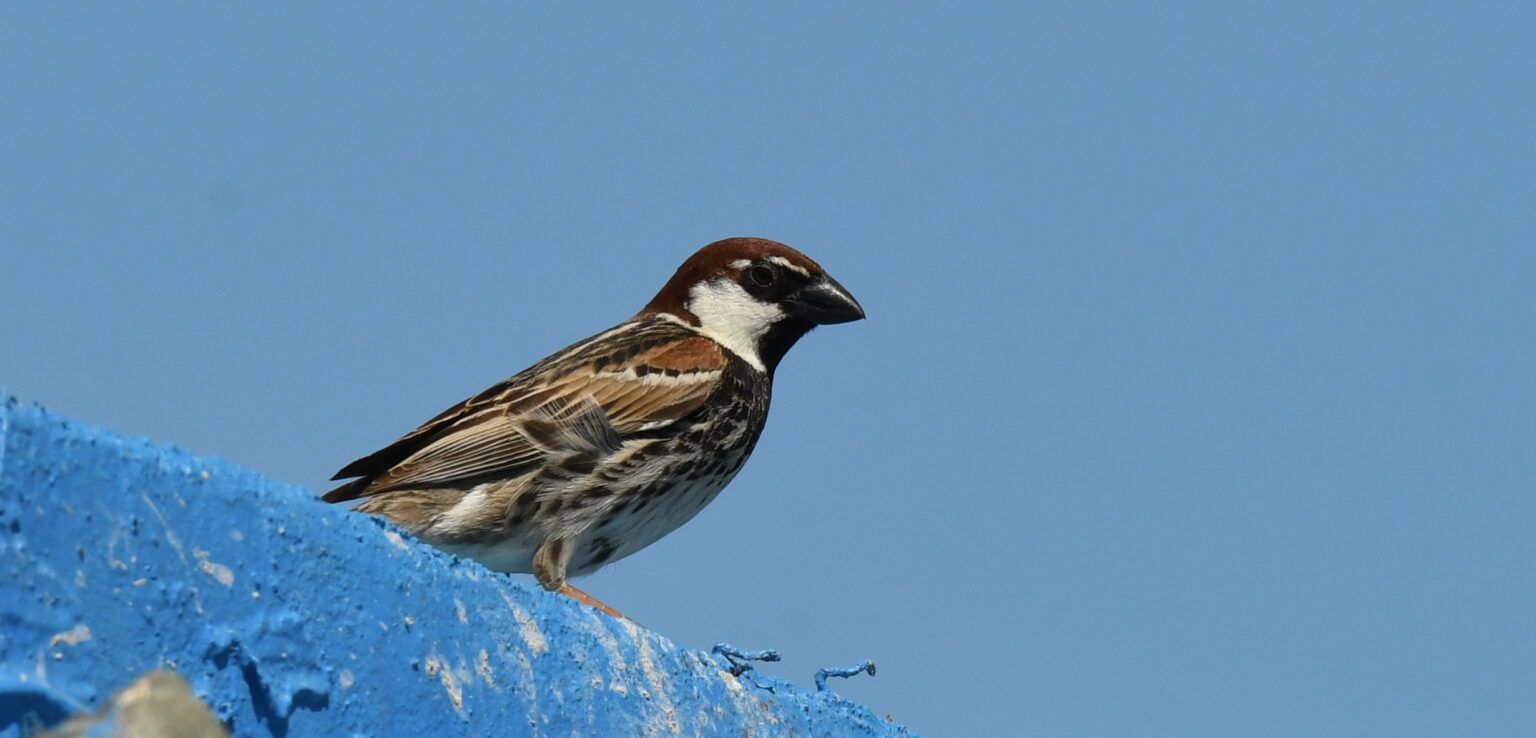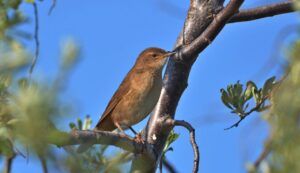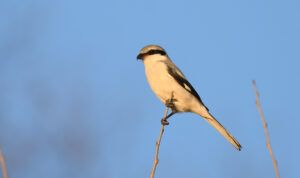The Spanish Sparrow or Willow Sparrow (Passer hispaniolensis) is a passerine bird of the sparrow family Passeridae. It is found in the Mediterranean region and southwest and central Asia. It is very similar to the closely related House Sparrow, and the two species show their close relation in a “biological mix-up” of hybridisation in the Mediterranean region, which complicates the taxonomy of this species.
The Spanish Sparrow is a rather large sparrow, at 15–16 cm (5.9–6.3 in) in length, and 22–36 g (0.8–1.3 oz) in weight. It is slightly larger and heavier than House Sparrows, and also has a slightly longer and stouter bill. The male is similar to the House Sparrow in plumage, but differs in its underparts heavily streaked with black, a chestnut rather than grey crown, and white rather than grey cheeks. The female is effectively inseparable from House Sparrow in its plumage, which is grey-brown overall but more boldly marked. The female has light streaking on its sides, a pale cream supercilium, and broad cream streaks on its back.
The two subspecies differ little in worn breeding plumage, but both sexes are quite distinct in fresh winter plumage, with the eastern subspecies P. h. transcaspicus paler with less chestnut.
The Spanish Sparrow’s vocalisations are similar to those of the House Sparrow. The male gives a call somewhat different from that of the House Sparrow when displaying at its nest. This call is a pair of strident, disyllabic chirps, similar to those of the House Sparrow, but louder and high-pitched, transcribed as chweeng-chweeng, cheela-cheeli. A similar call, softer and more like the House Sparrow’s tschilp, is used by birds arriving or departing at roosting sites. The Spanish Sparrow’s other calls are almost the same as those of the House Sparrow. A soft quer quer quer is given at the nest by mated pairs, a quer-it flight call is given by flocking birds, and a chur-chur-it call is given as a threat.
Taxonomy and systematics
The Spanish Sparrow is a close relative of the House Sparrow in the genus Passer and the sparrow family Passeridae. Its taxonomy is greatly complicated by the “biological mix-up” it forms with the House Sparrow in the Mediterranean. In most of the Mediterranean, one or both of the two species occurs, with only a limited degree of hybridisation. On the Italian Peninsula and Corsica, the two species are replaced by the Italian Sparrow, a puzzling type of sparrow apparently intermediate between the Spanish Sparrow and the House Sparrow.
The Italian Sparrow has been classified as a hybrid with the House Sparrow, the same species as the Spanish Sparrow, the same species as the House Sparrow, and as a separate species. The Spanish Sparrow also hybridises freely with House Sparrow in parts of northern Africa (northeastern Algeria, Tunisia, and northwestern Libya), forming highly variable mixed populations with a full range of characters from pure House Sparrow to pure Spanish Sparrow. On the Mediterranean islands of Malta, Gozo, Crete, Rhodes, and Karpathos, there are more apparently intermediate birds of unknown status.
Phylogenetic studies of nuclear mitochondrial DNA pseudogenes show that the House Sparrow is closely related genetically to the Italian Sparrow but not the Spanish Sparrow.
The Spanish Sparrow was first described by the Dutch zoologist Coenraad Jacob Temminck as Fringilla hispaniolensis, from a specimen collected at Algeciras, in southern Spain. The usual English name refers to the description of the species from Spain. The name “Willow Sparrow”, referring to the moist habitat of this bird, is sometimes used, especially when the Italian Sparrow is considered the same species.
Two subspecies of Spanish Sparrow are usually recognised, the western nominate subspecies hispaniolensis, and the eastern transcaspicus, described by Austrian ornithologist Viktor von Tschusi zu Schmidhoffen in 1902 from Ýolöten, Turkmenistan.Birds in Anatolia and Cyprus are usually considered to belong to P. h. transcaspicus, but birds as far east as Ceylanpınar have been noted as intermediates, and the difference between the two subspecies may be clinal.
Distribution and habitat
The Spanish Sparrow has a highly complex distribution in the Mediterranean region, Macaronesia, and southwest to central Asia. It breeds mostly in a band of latitude about fifteen degrees wide, from the Danube valley and the Aral Sea in the north to Libya and central Iran in the south. Its range has expanded greatly by natural colonisation over the last two centuries, in the Balkans, where it reached Romania, Serbia, and Moldova from 1950 onwards; and in Macaronesia, where its range expansion has been attributed to introductions and travel by ship, but was more likely natural colonisation by migrating birds. Vagrants occur widely, as far north as Scotland and Norway.
photo: Mihai BACIU







